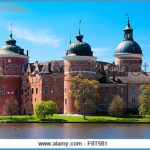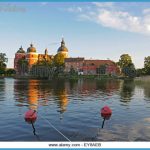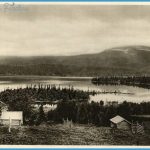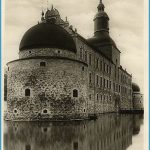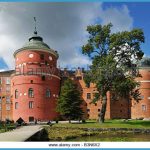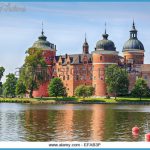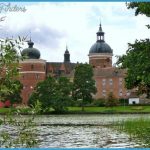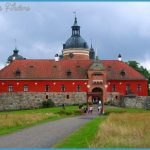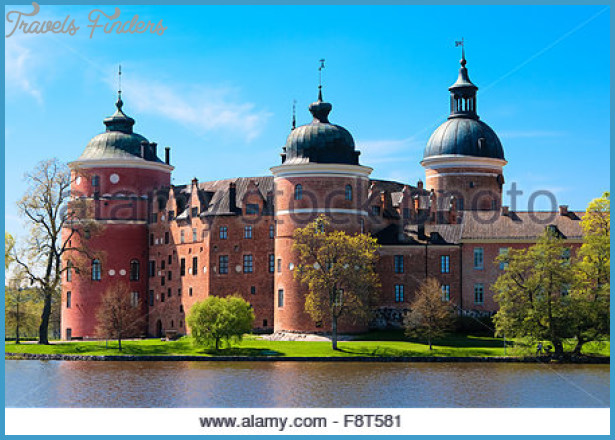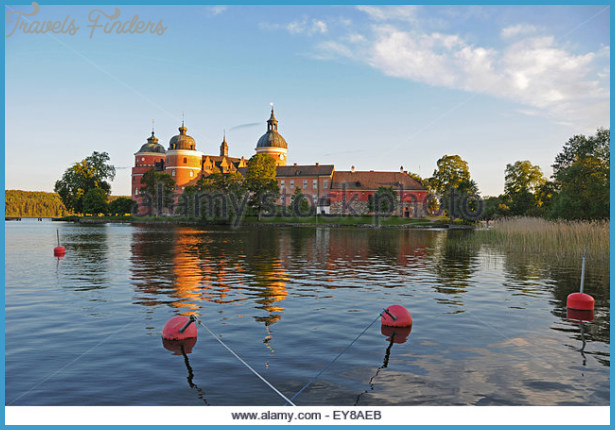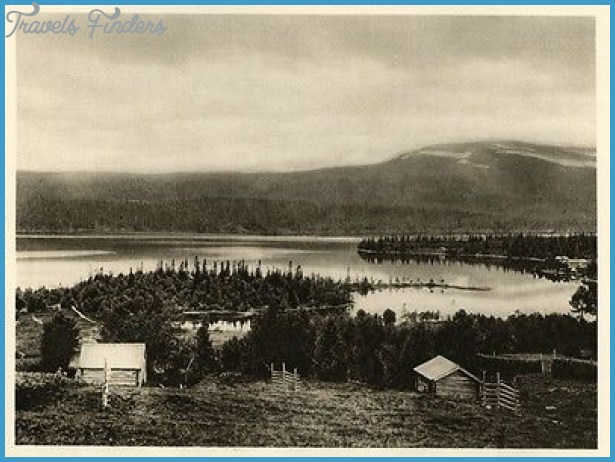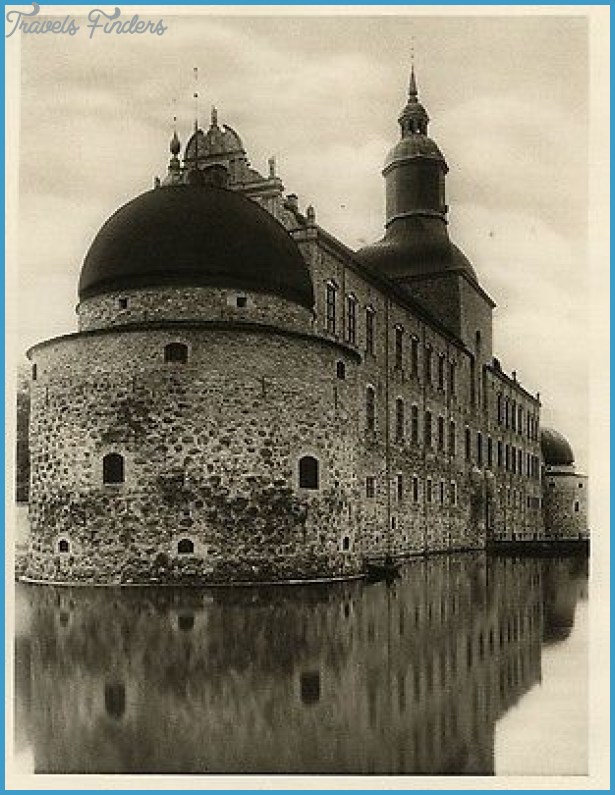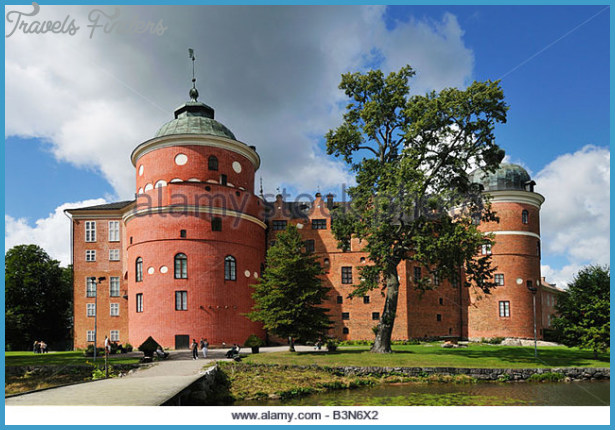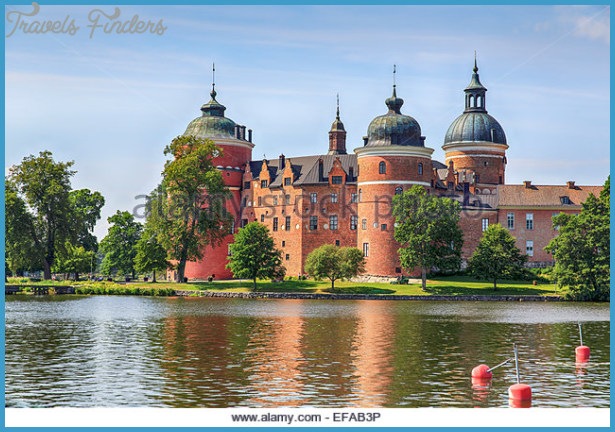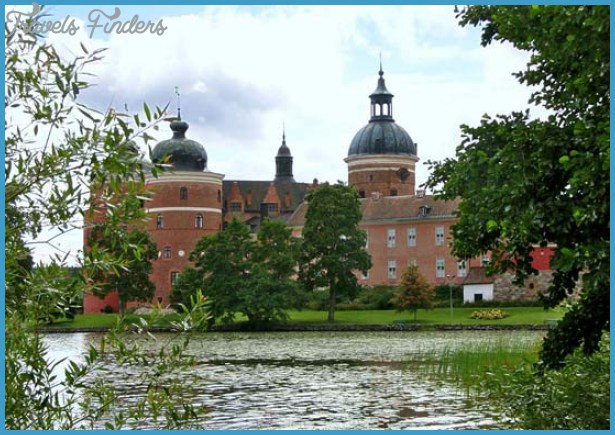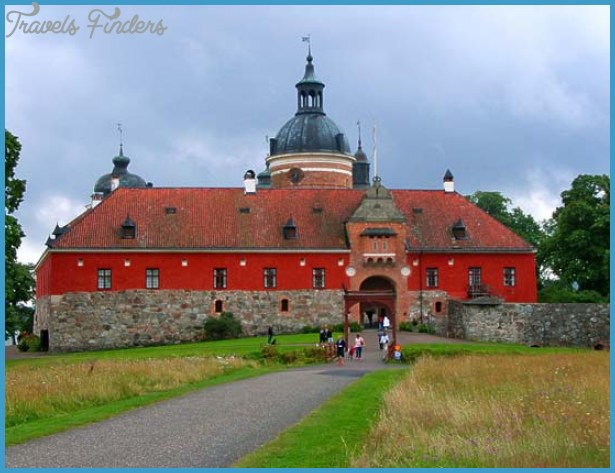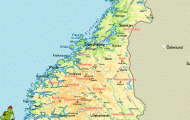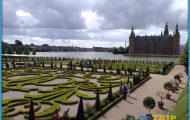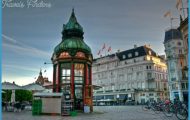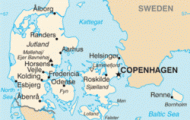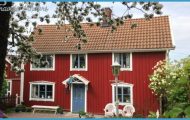The most notable building in Mariefred is Grips-holm Castle, on an island close to the shores of the lake. It takes its name from a stronghold built in 1380 by Bo Jonsson, known as Grip. The present castle was built by Henrik von Gollen in the reign of Gustavus Vasa (1537-44). Its last occupant (1864) was King Karl XV. In the past it was a prison as well as a residence; Gustavus Vasa’s sons and the deposed King Gustav IV were confined here.
With its massive walls, towers and defensive structures, Gripsholm has preserved its medieval character in spite of extensive alteration and new building. The large bronze cannon in the cobbled courtyard are trophies of the Russian wars in the time of Johan III. One of the runic stones beside the drawbridge has an inscription recording a journey to Russia by Ingvar Vitfarne.
INTERIOR. Visitors can view 60 of the castle’s 1 02 rooms (among which are the Round Saloon and the pretty little Theatre in the Knights’ Wing, built for Gustav III in the second half of the 18th c.). The collection of 2800 portraits of royal personages and other leading figures is one of the largest in Europe. Portraits of private citizens from 1809 to the present day are housed in an annexe to the Folk High School in Mariefred.
There are regular boat services between Stockholm and Mariefred. Another attractive possibility for railway enthusiasts is a trip on the old railway (Ostra Sodermanlands Jarnvag) running between Mariefred and Laggesta (40 minutes).
Vaxholm lies on the island of Vaxo, NE of Stockholm, on the channel leading into the capital from the Baltic. On a rocky island between Vaxo and Rindo is a defensive tower, built by Gustavus Vasa to protect this
Old railway, Mariefred entrance channel. During the 17th c. it was developed into a fortress. In the following century, Rindo was also fortified. The fortress of Vaxholm was rebuilt in 1838, but lost its importance immediately afterthis rebuilding, since its wall could not withstand modern artillery. It is now a museum, with a collection of material from its days as a fortress. Until 1 912, the building of stone houses in Vaxholm was prohibited. During the 1 9th c. Vaxholm was a favourite summer resort of the people of Stockholm, and the little summer houses with carved decoration and enclosed verandas, in which the residents drank their evening punch, are relics of that era.
20 km (12 miles) SE of Stockholm (25 minutes on the suburban railway), in a bay in the Baggensfjard, is the fashionable bathing resort of Saltsjobaden (Grand Hotel, 1 50 b.), with a yacht harbour, golf-course and tennis courts. The Stockholm Observatory is also here.
60 km (40 miles) S of Stockholm, on the Sodertorn peninsula, is the industrial town of Nynashamn (Nynas Hotel, 80 b.); there is a boat service to Visby on the island of Gotland (107).
There are also very attractive boat trips, in good weather, to the skerries.

